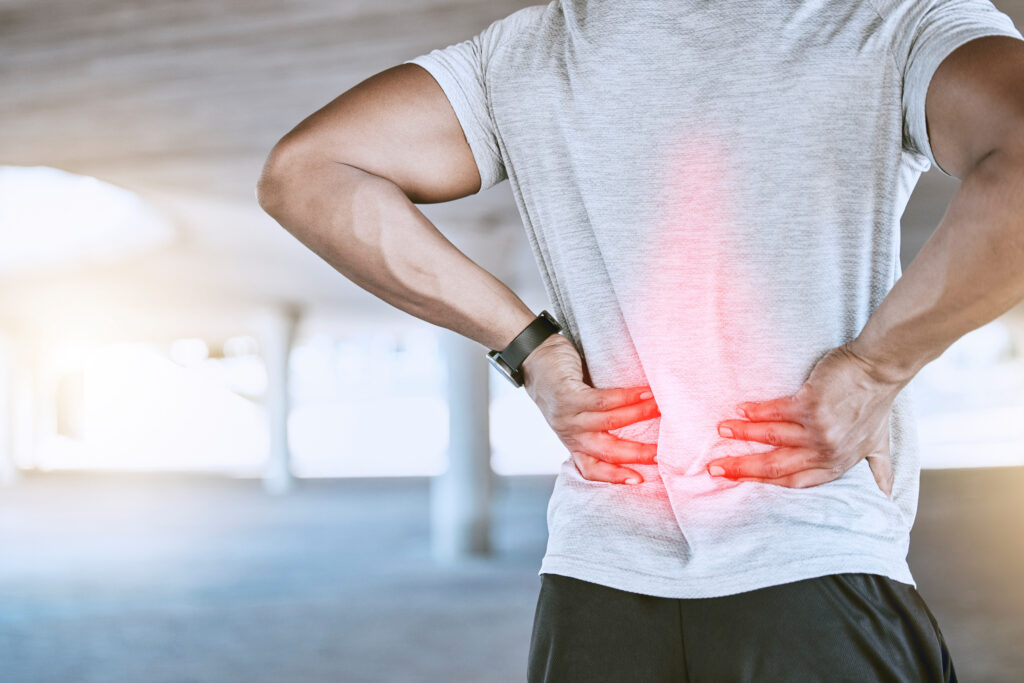If you're tired of relying on medication for pain relief, you've got options that could transform your experience. Natural pain management techniques, like mindfulness practices and specific dietary changes, may not only ease your discomfort but also address root causes. You might be surprised by the effectiveness of simple herbal remedies or essential oils. Understanding these methods can be the first step toward a more holistic approach to your health. Curious about which techniques could work best for you?
Understanding Pain Management
Pain management is a fundamental aspect of healthcare that focuses on alleviating discomfort and improving quality of life. When you experience pain, it can hinder your daily activities and overall well-being. Understanding pain management is essential for you to make informed decisions about your treatment options.
First, you need to recognize that pain can be acute or chronic. Acute pain usually arises from an injury or illness and typically resolves as you heal. Chronic pain, on the other hand, persists for months or even years, often requiring ongoing management. Identifying the type of pain you're dealing with is the first step in determining the best approach to relief.
Next, consider the various methods available for managing pain. Traditional options often include medications, such as over-the-counter pain relievers or prescription narcotics. However, these can come with side effects and potential dependency issues. That's why exploring alternative methods can be beneficial.
Non-pharmacological approaches like physical therapy, acupuncture, and mindfulness practices can play a significant role in your pain management journey. By engaging in these techniques, you can empower yourself to take an active role in your recovery.
Finally, open communication with your healthcare provider is essential. Discussing your pain levels, triggers, and any past treatments helps them tailor a plan that works best for you.
Understanding pain management isn't just about finding relief; it's about reclaiming your life and enhancing your overall well-being.
Benefits of Natural Techniques
Exploring natural pain management techniques offers a wide array of benefits that can enhance your overall well-being. These methods often promote a holistic approach, addressing not just the symptoms but also the underlying causes of pain. By choosing natural techniques, you can minimize reliance on pharmaceuticals, reducing the risk of side effects and dependency.
One significant advantage is that many natural techniques, like physical therapy or acupuncture, encourage movement and circulation. This can lead to improved mobility and reduced stiffness, which is particularly beneficial for chronic pain conditions. You'll likely find that your body responds positively to these methods, promoting healing and recovery in a more sustainable way.
Another benefit is the empowerment you gain through self-management. By incorporating practices like yoga or herbal remedies into your routine, you take an active role in your health. This sense of control can reduce feelings of helplessness that often accompany chronic pain.
Additionally, many natural techniques emphasize lifestyle changes—like better nutrition or regular exercise—which not only help alleviate pain but also contribute to your overall health.
Lastly, engaging in natural pain management techniques often fosters a sense of community. Whether you join a yoga class or participate in a support group, you connect with others who understand your struggles. This shared experience can provide emotional support, making your journey toward pain management feel less isolating.
To conclude, embracing natural techniques can lead to a healthier, more balanced life.
Mindfulness and Meditation
Mindfulness and meditation are powerful tools that can greatly reduce pain and enhance your overall quality of life. By incorporating these practices into your daily routine, you can create a mental environment that fosters healing and resilience against discomfort.
Mindfulness encourages you to focus on the present moment, helping you acknowledge your pain without judgment. This shift in perspective can lessen the emotional weight associated with pain, making it more manageable.
Meditation, on the other hand, helps you cultivate a state of deep relaxation. Through techniques like deep breathing or guided imagery, you can promote a sense of calm that counteracts the stress and tension often linked to pain. Regular meditation sessions can train your mind to respond differently to pain signals, reducing their intensity over time.
To get started, find a quiet space where you won't be disturbed. Sit comfortably, close your eyes, and take a few deep breaths. Focus on your breath or a calming mantra, and when your mind wanders, gently bring it back to your point of focus.
Aim for at least 10 minutes a day. As you keep practicing, you'll notice an increase in your ability to cope with pain and an overall improvement in your emotional well-being.
Herbal Remedies for Pain
When it comes to managing pain naturally, herbal remedies can be a powerful option.
You'll find a variety of popular herbs that have been used for centuries, each with its own unique benefits.
Let's explore how to prepare these remedies effectively to help relieve your discomfort.
Popular Herbal Options
Although many people turn to over-the-counter medications for pain relief, herbal remedies offer a natural alternative that can be just as effective.
When you're seeking relief from discomfort, consider exploring these popular herbal options that have been used for centuries:
1. Turmeric: Known for its anti-inflammatory properties, turmeric contains curcumin, which can help reduce pain associated with arthritis and muscle soreness.
You can easily incorporate it into your diet as a spice or through supplements.
2. Ginger: This powerful root isn't just for settling your stomach; it also boasts anti-inflammatory effects.
Ginger can alleviate pain from headaches and menstrual cramps. You might enjoy it fresh, in tea, or as a supplement.
3. Willow Bark: Often referred to as nature's aspirin, willow bark has been used for centuries to treat pain, especially headaches and lower back pain.
You can take it as a tea or in capsule form for convenient use.
Preparation Methods Explained
Understanding the preparation methods for herbal remedies can enhance their effectiveness and assure you're getting the most out of their pain-relieving properties.
To start, you'll want to take into account how you're extracting the beneficial compounds from the herbs. Infusions and decoctions are popular methods. An infusion is typically used for delicate herbs, like chamomile; just steep the herb in hot water for about 10-15 minutes.
On the other hand, decoctions are perfect for tougher materials, such as roots or bark. Boil them in water for 20-30 minutes to confirm the active ingredients are fully extracted.
Tinctures are another effective option. By soaking herbs in alcohol or vinegar, you create a concentrated liquid that can be taken directly or added to water.
If you're interested in topical applications, oils and salves can be made by infusing herbs in oils, allowing the skin to absorb their healing properties.
Lastly, always remember to source high-quality herbs, as their potency considerably affects the outcome.
Physical Therapy Approaches
Physical therapy approaches offer a hands-on way to manage pain and improve mobility. By working with a qualified therapist, you can tailor a program that addresses your specific needs.
These methods can help you regain strength, flexibility, and function, all while minimizing reliance on medication.
Here are three effective physical therapy techniques you might consider:
- Manual Therapy: This hands-on approach involves the therapist using their hands to manipulate soft tissues and joints. You'll likely find it relieving as it helps reduce pain and improve movement.
- Therapeutic Exercises: Engaging in targeted exercises can strengthen muscles and support your joints. The therapist will guide you through movements that enhance flexibility and stability, making daily activities easier and less painful.
- Modalities: Physical therapists often use various modalities like heat, ice, or electrical stimulation. These techniques can further alleviate pain and promote healing, allowing you to participate more actively in your rehab journey.
Incorporating these physical therapy techniques into your pain management plan can lead to lasting improvement.
You'll not only experience relief but also gain the tools to maintain your mobility over time. By taking an active role in your recovery, you empower yourself to live a more fulfilling life.
Don't hesitate to reach out to a physical therapist to discuss how these approaches can work for you.
Acupuncture and Acupressure
If you're looking for an effective way to manage pain, acupuncture and acupressure might be worth exploring.
These techniques offer unique benefits and are grounded in ancient practices that many find helpful.
Let's break down how they work, their safety, and what you can expect from each method.
Benefits of Acupuncture
Acupuncture offers a powerful approach to pain management, harnessing the body's natural healing abilities in tandem with targeted stimulation of specific points. When you choose acupuncture, you're not just treating symptoms; you're promoting overall wellness.
Here are three key benefits you'll likely experience:
- Pain Relief: Whether it's chronic pain or acute discomfort, acupuncture effectively alleviates pain by releasing endorphins, your body's natural painkillers. You'll feel a reduction in tension and discomfort after just a few sessions.
- Improved Circulation: The targeted needling enhances blood flow to affected areas. This increased circulation promotes healing and can lead to quicker recovery from injuries or surgeries.
- Stress Reduction: Acupuncture is known to calm the nervous system. By addressing imbalances, you'll find it easier to relax and manage stress, contributing to an overall sense of well-being.
Embracing acupuncture can transform your pain management journey. You'll discover a holistic method that not only addresses your pain but also nurtures your body and mind, helping you achieve a healthier, more balanced life.
Acupressure Techniques Explained
While acupuncture involves needles, acupressure uses your fingers to apply pressure to specific points on the body, offering a powerful alternative for pain relief and relaxation. This technique is rooted in traditional Chinese medicine and is based on the same principles as acupuncture. By stimulating certain points, you can help release blockages in your body's energy flow, promoting healing and comfort.
To practice acupressure, locate the points that correspond to the pain or discomfort you're experiencing. For instance, pressing on the space between your thumb and index finger can alleviate headaches, while applying pressure to the inside of your wrist can relieve nausea.
Use your fingers or a small tool to apply firm pressure for about 30 seconds to a minute, breathing deeply to enhance the effect.
You can perform acupressure anywhere, making it a convenient option for managing pain. It's easy to incorporate into your daily routine, whether you're at home, in the office, or on the go.
Safety and Effectiveness
Understanding the safety and effectiveness of both acupuncture and acupressure is essential for anyone considering these natural pain management techniques. You'll find that both methods are generally safe when performed by trained professionals. Acupuncture uses fine needles to stimulate specific points, while acupressure applies pressure with fingers or tools.
Here are three key points to keep in mind:
- Minimal Side Effects: Acupuncture may cause slight bruising or temporary soreness. Acupressure usually has even fewer side effects, making it a gentle option for pain relief.
- Evidence-Based Benefits: Research supports the effectiveness of both techniques in managing conditions like chronic pain, migraines, and stress. You might experience noticeable relief after just a few sessions.
- Holistic Approach: Both practices focus on balancing your body's energy, promoting overall wellness. This means you're not just addressing pain but also enhancing your well-being.
Nutrition and Pain Relief
Nutrition plays an essential role in managing pain, often intertwining with other holistic approaches to enhance overall well-being. When you focus on what you eat, you can greatly impact inflammation and pain levels in your body. Incorporating anti-inflammatory foods into your diet is a practical way to start. Foods rich in omega-3 fatty acids, like fatty fish, flaxseeds, and walnuts, help reduce inflammation and can alleviate pain.
You should also consider adding colorful fruits and vegetables to your meals. Berries, leafy greens, and cruciferous vegetables contain powerful antioxidants that combat oxidative stress, which contributes to pain. Spices like turmeric and ginger are particularly beneficial; they're known for their natural anti-inflammatory properties and can be easily added to various dishes.
On the flip side, be mindful of foods that may trigger or worsen your pain. Processed foods, excessive sugar, and refined carbohydrates can increase inflammation in your body. It might help to keep a food diary to track what you eat and how it affects your pain levels.
Don't forget about hydration, too. Staying well-hydrated supports overall health and can aid in pain management. Herbal teas and infused waters can be excellent alternatives to plain water, adding flavor and potential health benefits.
Ultimately, by making thoughtful dietary choices, you can empower yourself in your journey toward pain relief. Focus on nourishing your body with the right foods, and you'll likely notice a positive shift in how you feel.
Essential Oils and Aromatherapy
Essential oils and aromatherapy offer a natural way to manage pain and promote relaxation. By utilizing the potent properties of plants, you can create a soothing environment that eases discomfort and stress.
These oils can be inhaled, applied topically, or used in diffusers, allowing their therapeutic benefits to permeate your space.
Here are three essential oils that can help alleviate pain:
- Lavender: Known for its calming properties, lavender oil can help reduce anxiety and tension. Simply inhaling its scent or adding a few drops to your bath can create a tranquil atmosphere, easing headaches or muscle soreness.
- Peppermint: This invigorating oil has cooling effects that can soothe headaches and relieve muscle pain. You can apply diluted peppermint oil to your temples or the back of your neck for immediate relief.
- Eucalyptus: With its anti-inflammatory properties, eucalyptus oil is a great choice for respiratory issues and muscle pain. Inhaling its aroma can help clear your sinuses, while topical application may ease sore muscles.
Incorporating these essential oils into your daily routine can create a holistic approach to pain management.
Whether you're using them in a diffuser, mixing them with carrier oils for massage, or simply breathing in their scents, you'll find that nature provides powerful tools for comfort and healing.
Exercise and Movement Therapies
Incorporating movement into your pain management routine can be just as effective as using essential oils. Engaging in regular exercise and movement therapies can help reduce pain, improve flexibility, and enhance your overall well-being. Whether it's yoga, swimming, or walking, finding an activity you enjoy is key.
Start by setting realistic goals. You don't have to run a marathon to experience benefits. Just 20-30 minutes of moderate exercise a few times a week can make a significant difference. Focus on low-impact activities like cycling or stretching, which are easier on your joints while still promoting circulation and muscle strength.
Mind-body practices such as yoga and Pilates can also be beneficial. These approaches not only strengthen your body but also emphasize breathing and relaxation, helping to alleviate stress that can exacerbate pain. You might find that the gentle movements in these disciplines help improve your posture and balance, contributing to better pain management.
Don't forget about the importance of listening to your body. If something doesn't feel right, modify your movements or consult a professional for guidance. Consider working with a physical therapist, who can design a personalized exercise program tailored to your specific needs and limitations.
Lastly, consistency is essential. Make movement a regular part of your life, and you'll likely notice a gradual reduction in pain and an increase in your overall energy and mood. So, lace up those sneakers and get moving—your body will thank you!
Lifestyle Changes for Relief
To effectively manage pain, you can make some impactful lifestyle changes that focus on diet, exercise, and stress management.
By adjusting what you eat, staying active, and incorporating relaxation techniques, you'll not only reduce pain but also improve your overall well-being.
Let's explore how these changes can lead to significant relief.
Diet and Nutrition
A well-balanced diet can considerably impact your pain levels and overall well-being. By choosing the right foods, you can help reduce inflammation and boost your body's healing processes.
Here are three dietary changes you can make to support your pain management journey:
- Incorporate Omega-3 Fatty Acids: Foods like salmon, walnuts, and chia seeds are rich in omega-3s, which can help lower inflammation and alleviate pain.
- Load Up on Antioxidant-Rich Fruits and Vegetables: Berries, spinach, and kale are packed with antioxidants that fight free radicals in your body, potentially reducing pain and promoting recovery.
- Choose Whole Grains: Opt for whole grains like brown rice, quinoa, and whole grain bread instead of refined grains. They provide essential nutrients and fiber that can help reduce chronic inflammation.
Making these dietary adjustments can create a significant shift in your pain levels.
Remember, nutrition isn't just about eating; it's about nourishing your body to support healing and wellness.
Exercise and Movement
Engaging in regular exercise can markedly enhance your pain management efforts and improve your overall quality of life. When you move your body, you stimulate the release of endorphins, those natural painkillers that help reduce discomfort.
Whether it's a brisk walk, swimming, or yoga, find activities you enjoy to make it easier to stick with your routine.
Incorporating strength training can also play an essential role in pain relief. Building muscle supports your joints, which can alleviate pressure and reduce pain over time. Aim for at least 150 minutes of moderate aerobic activity per week, combined with two days of strength training.
Flexibility exercises, like stretching or tai chi, can improve your range of motion and prevent stiffness, making daily tasks easier and less painful.
Always listen to your body; if something doesn't feel right, modify your approach or consult with a professional.
Stress Management Techniques
While managing stress may seem intimidating, implementing effective techniques can considerably reduce your pain levels and enhance your overall well-being.
Incorporating stress management into your daily routine isn't just beneficial; it's essential for a balanced life. Here are three techniques you can easily adopt:
- Mindfulness Meditation: Set aside just 10 minutes a day to focus on your breath. Visualize tension leaving your body with each exhale. This practice can ground you and calm your mind.
- Physical Activity: Engage in moderate exercise, like walking or yoga. Not only does this release endorphins (your body's natural painkillers), but it also helps clear your mind. Aim for at least 30 minutes a day.
- Journaling: Write down your thoughts and feelings. This simple act can provide clarity and help you process your emotions, reducing overwhelming stress. Try to journal for a few minutes each night.
Conclusion
Incorporating natural pain management techniques into your daily routine can transform your approach to relief and well-being. By embracing mindfulness, herbal remedies, and nutritious foods, you can tackle pain from multiple angles. Remember to stay active with gentle exercises and explore the benefits of essential oils. Making these holistic lifestyle changes not only alleviates discomfort but also promotes long-term health. Start today, and take charge of your pain management journey for a healthier, happier life.



